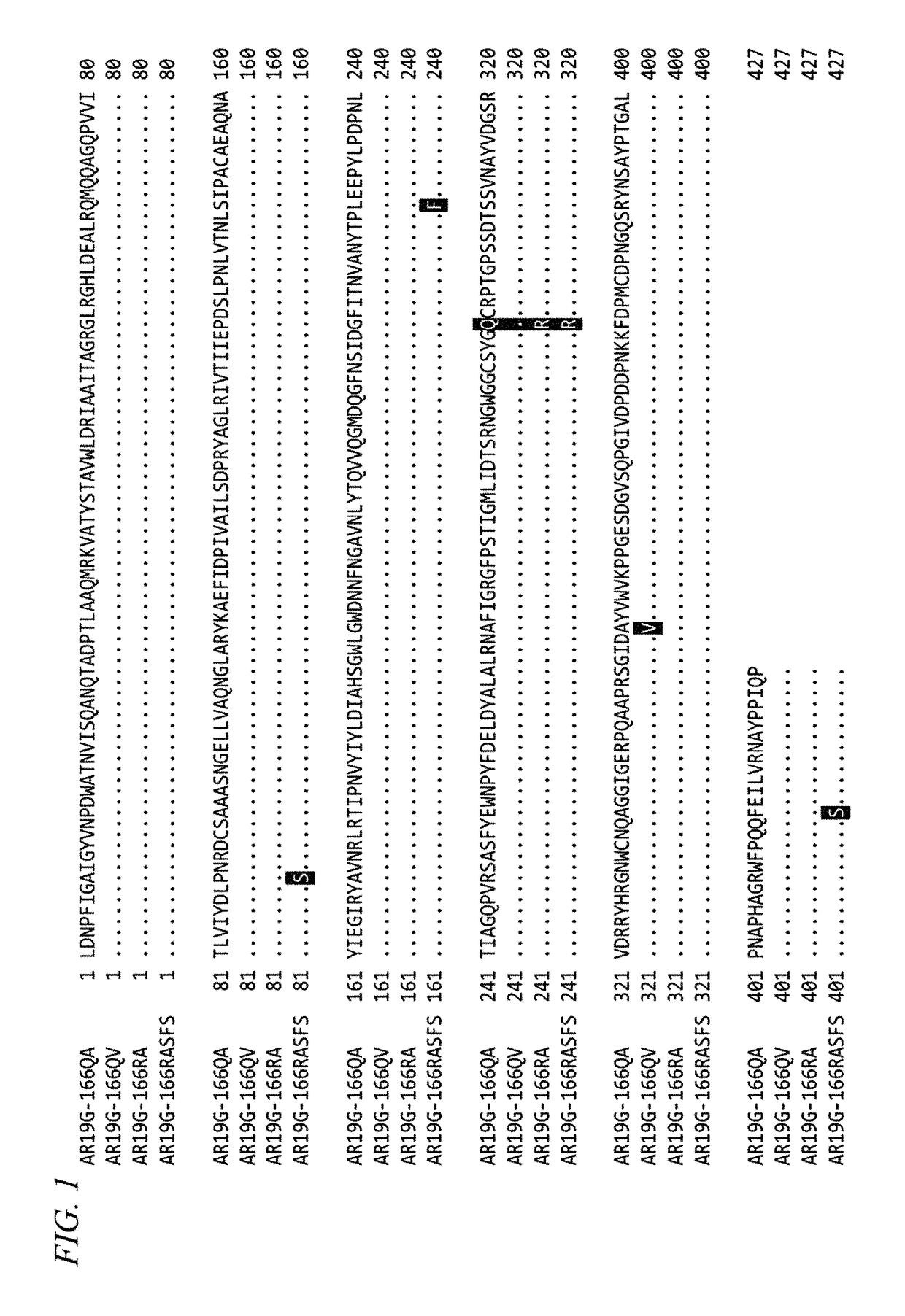Method for obtaining natural variant of enzyme and super thermostable cellobiohydrolase
a cellobiohydrolase and natural variant technology, applied in the field of natural variant obtaining an enzyme and relating to super thermostable cellobiohydrohydrolase, can solve the problems of low hydrolysis efficiency resulting from the enzyme, poor efficiency of enzyme modification performed by the de method, and increase in the cost of cellulose-based biofuels, etc., to achieve efficient obtaining a gain-of-function type variant
- Summary
- Abstract
- Description
- Claims
- Application Information
AI Technical Summary
Benefits of technology
Problems solved by technology
Method used
Image
Examples
example 1
Cloning of Novel Super Thermostable Cellobiohydrolase from Soil of Hot Spring
[0150] Preparation of Metagenomic DNA of High Temperature Soil
[0151]From an area in Japan from which high temperature hot spring gushes out, hot spring water containing soil, mud, and biomass was collected. The temperature and pH of the just collected samples were in a range of 33° C. to 78° C. and 7.2 to 8 respectively. Among the samples of soil of hot spring, five samples named AR19, OJS2, OJS4, OJS7, and OJS9 respectively as metagenomic DNA samples were subjected to DNA extraction. From 10 g of each of the collected samples of soil of hot spring, DNA was extracted by using a DNA extraction kit (ISOIL Large for Beads ver. 2, NIPPON GENE CO., LTD.). From AR19, DNA was obtained in an amount of equal to or greater than 10 μg, and metagenomic sequencing was performed on 5 μg of the DNA by using GS FLX Titanium 454 manufactured by Roche Diagnostics. The remaining DNA was used for PCR cloning of cellulase genes...
PUM
| Property | Measurement | Unit |
|---|---|---|
| pH | aaaaa | aaaaa |
| temperature | aaaaa | aaaaa |
| optimal temperature | aaaaa | aaaaa |
Abstract
Description
Claims
Application Information
 Login to View More
Login to View More - R&D
- Intellectual Property
- Life Sciences
- Materials
- Tech Scout
- Unparalleled Data Quality
- Higher Quality Content
- 60% Fewer Hallucinations
Browse by: Latest US Patents, China's latest patents, Technical Efficacy Thesaurus, Application Domain, Technology Topic, Popular Technical Reports.
© 2025 PatSnap. All rights reserved.Legal|Privacy policy|Modern Slavery Act Transparency Statement|Sitemap|About US| Contact US: help@patsnap.com



